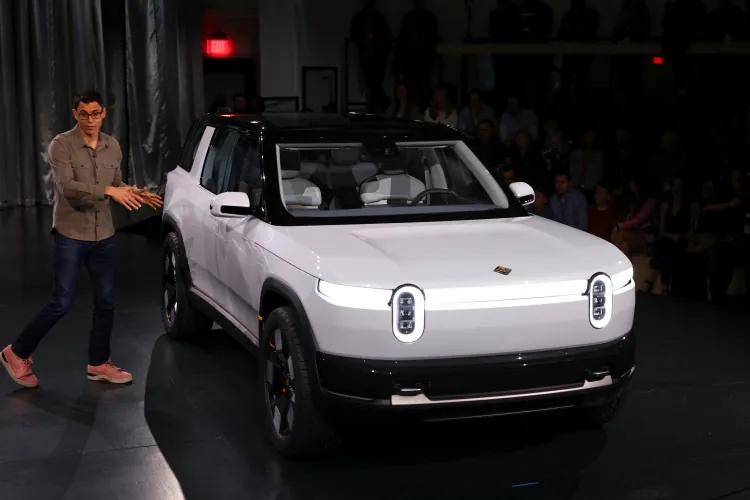-
Introduction
- Overview of Rivian's announcement
- Impact of new models on stock prices and company strategy
-
Rivian's Strategic Shift
- Introduction to the R2 and R3 models
- Decision to utilize the Illinois factory for production
- Expected benefits of the strategic shift
-
The Affordable R2 and R3 Models
- Features and pricing of the R2 SUV
- Introduction of the R3 and R3X variants
- Comparison with Rivian's flagship models
-
Impact on Rivian's Financial Strategy
- Analysis of Rivian's financial position
- The role of the new models in 'slowing the burn'
- Future capital needs and production capacity
-
Market Response and Consumer Expectation
- Reception at the launch event
- Potential market impact and consumer adoption
-
Challenges and Opportunities Ahead
- Production challenges and cost management
- Opportunities in the EV market and competitive landscape
-
Conclusion
- Summary of Rivian's strategic moves
- The potential future of Rivian and the EV industry
-
FAQs
- Details on the R2 and R3 launch dates
- Expected price range for the new models
- Rivian's plans for the Georgia plant
-
Further Reading and Resources
- For more insights into the evolving EV landscape, check out Kiksee Magazine.
Introduction
In a significant move that could reshape the electric vehicle (EV) market, Rivian Automotive Inc. unveiled its smaller, more affordable R2 SUVs and R3 crossovers. This announcement, made in Laguna Beach, California, sent Rivian shares soaring by 13.4%, underscoring the market's positive reception of the company's strategic pivot. The introduction of these models is not just a product launch; it's a bold statement of Rivian's commitment to making EVs more accessible to a broader audience.
Rivian's Strategic Shift
At the core of Rivian's announcement is the strategic decision to begin production of the R2 model at its existing factory in Normal, Illinois. This move is set to expedite the delivery timeline to the first half of 2026, a significant acceleration compared to the original plans. By leveraging the capabilities of the Illinois site, Rivian aims to navigate the challenges of the current economic climate, including the high interest rates that have dampened EV demand.
The Affordable R2 and R3 Models
The R2 SUV, with a starting price of $45,000, marks a new entry point into Rivian's lineup, offering over 300 miles of range. This pricing strategy places the R2 well below the flagship R1 models, making it a pivotal component of Rivian's success in a competitive market. Additionally, the surprise introduction of the R3 and its more powerful variant, the R3X, further expands Rivian's portfolio, promising even greater affordability and accessibility.
Impact on Rivian's Financial Strategy
Rivian's financial strategy is a balancing act of expanding production capabilities while managing significant investment requirements. Despite the high cost associated with this expansion, the company's move to accelerate the R2's production reflects a strategic effort to "slow the burn" of cash reserves. With over $9 billion in cash following two bond issuances last year, Rivian is positioned to navigate its ambitious plans, though analysts caution that additional capital may be needed by 2026.
Market Response and Consumer Expectation
The launch event in Laguna Beach generated significant excitement, signaling strong consumer interest in Rivian's new models. The R2's competitive price point, in particular, is seen as a game-changer for potential EV buyers, offering a compelling alternative to traditional gas-powered vehicles. This enthusiasm is a testament to Rivian's growing influence in the EV market and its potential to drive wider adoption of electric mobility.
Challenges and Opportunities Ahead
As Rivian embarks on























